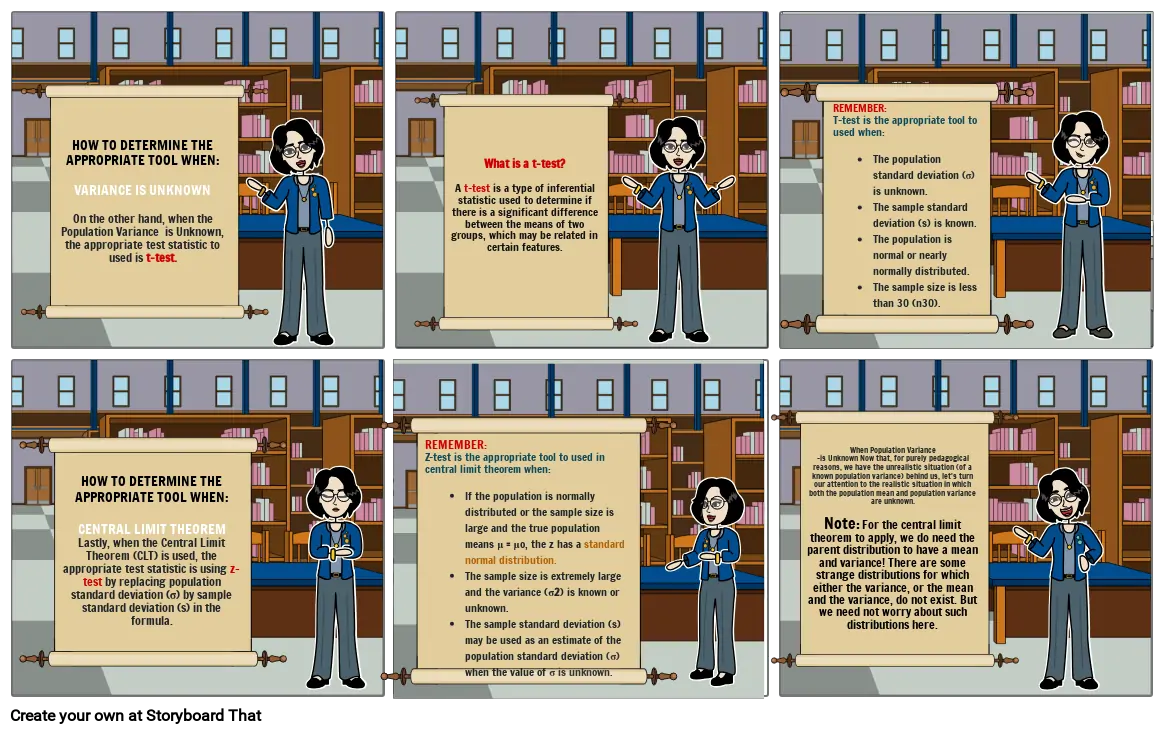VARIANCE

Texte du Storyboard
- Glisser: 1
- SUBMITTED BY: DIANA C. ESGUERRASECTION:11-ICT RELISUBMITTED TO:Mrs.
- HOW TO DETERMINE THE APPROPRIATE TOOL WHEN:VARIANCE IS UNKNOWNOn the other hand, when the Population Variance is Unknown, the appropriate test statistic to used is t-test.
- Glisser: 2
- What is a t-test?A t-test is a type of inferential statistic used to determine if there is a significant difference between the means of two groups, which may be related in certain features.
- Glisser: 3
- REMEMBER:T-test is the appropriate tool to used when:The population standard deviation (σ) is unknown.The sample standard deviation (s) is known.The population is normal or nearly normally distributed.The sample size is less than 30 (n30).
- Glisser: 4
- HOW TO DETERMINE THE APPROPRIATE TOOL WHEN:CENTRAL LIMIT THEOREMLastly, when the Central Limit Theorem (CLT) is used, the appropriate test statistic is using z-test by replacing population standard deviation (σ) by sample standard deviation (s) in the formula.
- Glisser: 5
- REMEMBER:Z-test is the appropriate tool to used in central limit theorem when:If the population is normally distributed or the sample size is large and the true population means μ = μo, the z has a standard normal distribution.The sample size is extremely large and the variance (σ2) is known or unknown.The sample standard deviation (s) may be used as an estimate of the population standard deviation (σ) when the value of σ is unknown.
- Glisser: 6
- When Population Variance-is Unknown Now that, for purely pedagogical reasons, we have the unrealistic situation (of a known population variance) behind us, let's turn our attention to the realistic situation in which both the population mean and population variance are unknown.Note: For the central limit theorem to apply, we do need the parent distribution to have a mean and variance! There are some strange distributions for which either the variance, or the mean and the variance, do not exist. But we need not worry about such distributions here.
Plus de 30 millions de storyboards créés
Aucun Téléchargement, Aucune Carte de Crédit et Aucune Connexion Nécessaire Pour Essayer !
